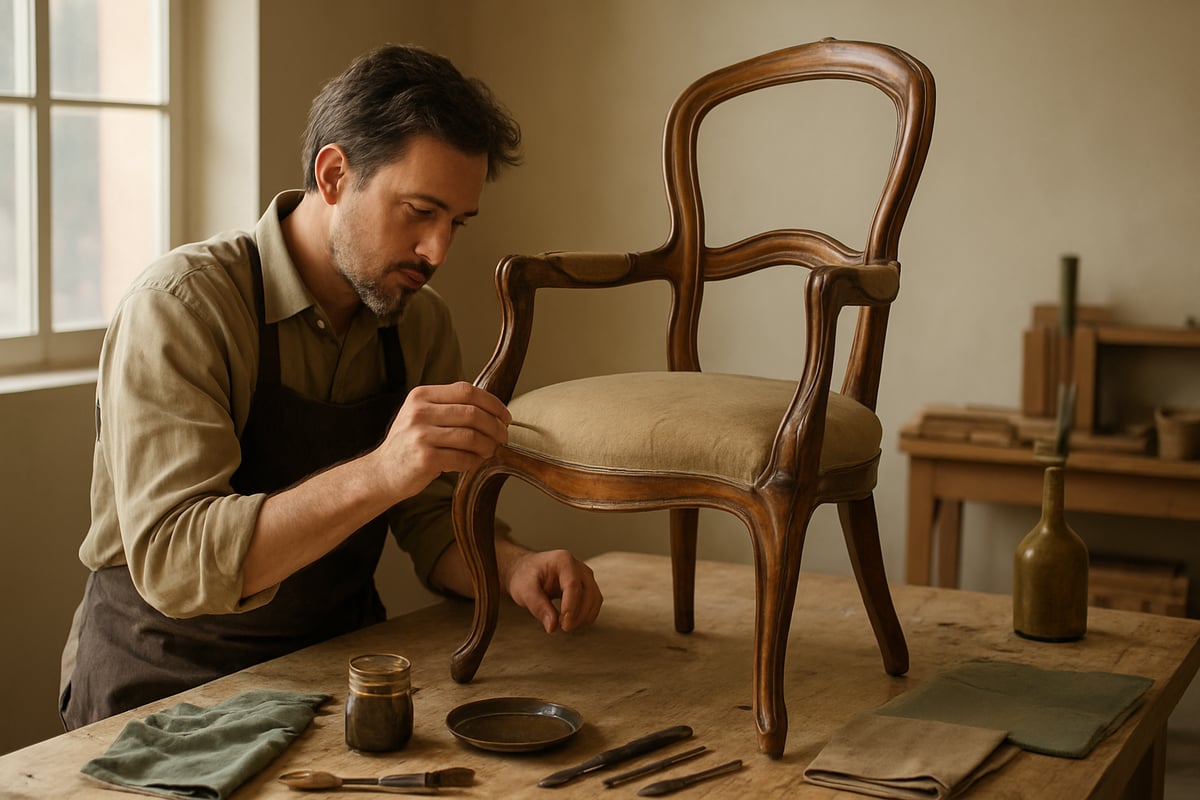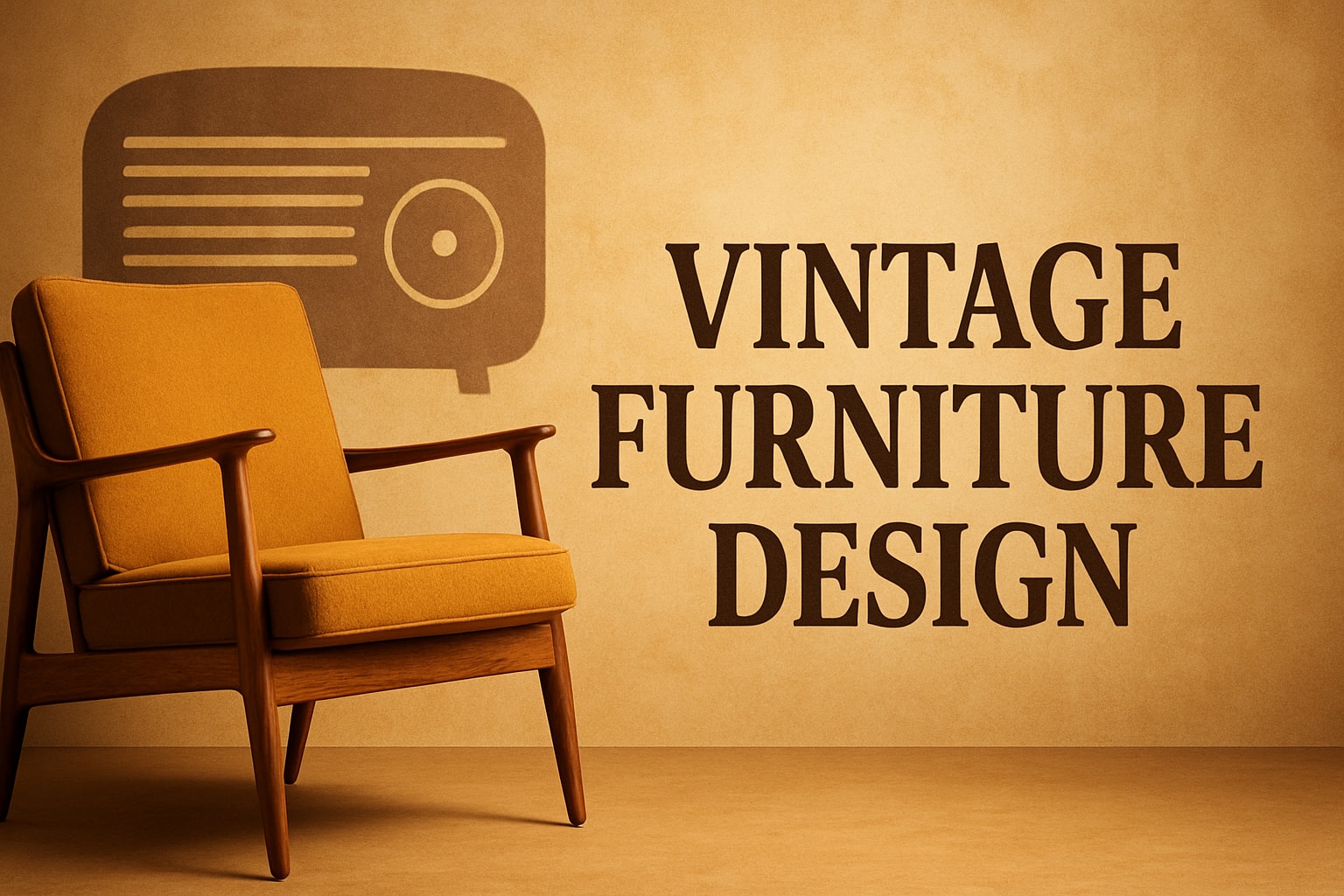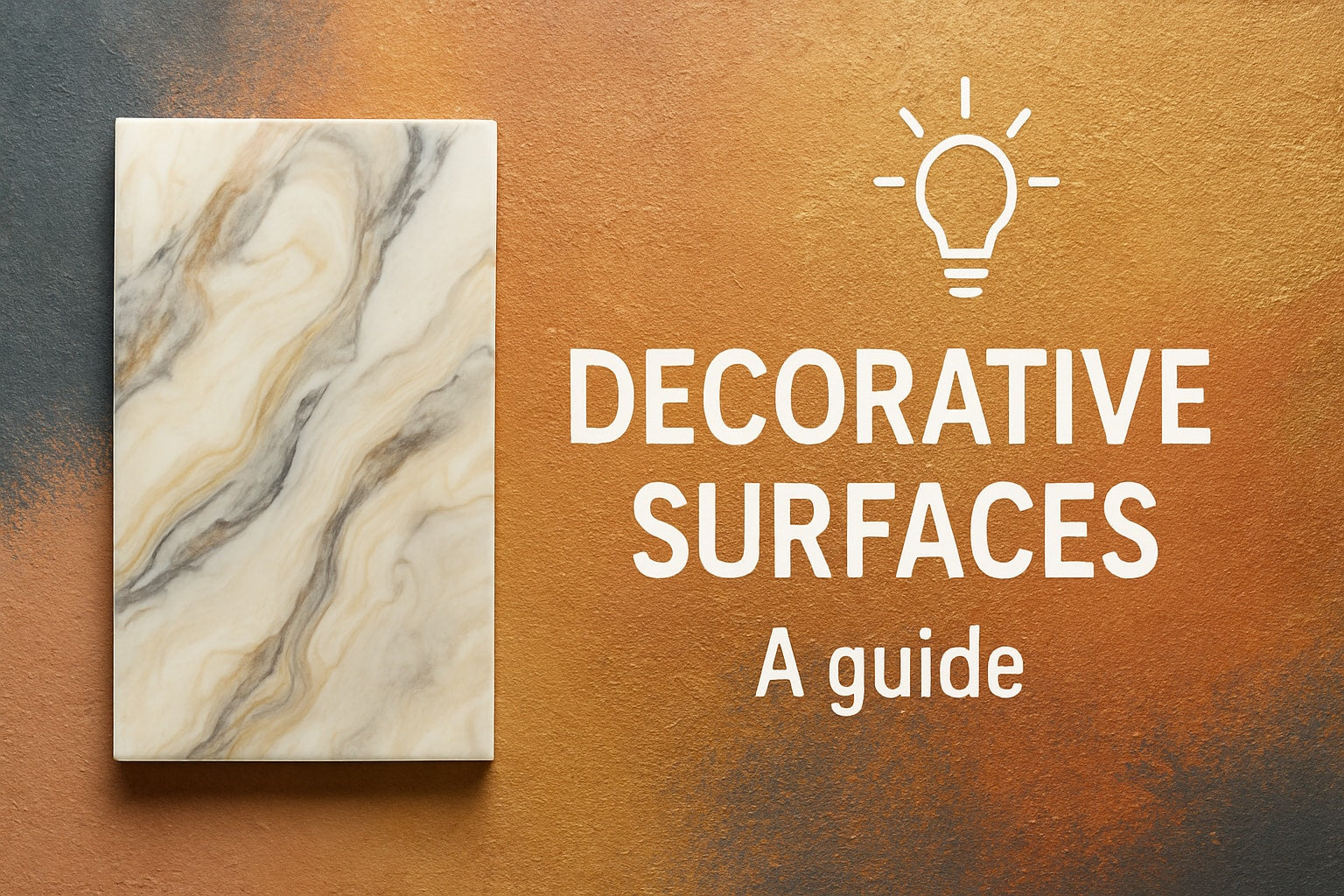Step into a world where history meets style. The enduring charm of vintage furniture instantly elevates modern interiors, telling stories that new pieces simply cannot.
In this guide, you will discover how to master vintage furniture design for a timeless yet contemporary home in 2025. We will share actionable tips, highlight key trends, and offer practical advice for integrating unique vintage finds into your living spaces.
Ready to create a home that stands out? Explore the essential eras, sourcing secrets, restoration tips, and expert styling insights that will help you achieve a look both classic and current.
The Enduring Appeal of Vintage Furniture
Vintage furniture design continues to captivate homeowners and designers in 2025. Its ability to bridge the past and present makes it a favorite for those seeking both substance and style. Understanding what truly defines vintage, why it endures, and how it holds value is essential for anyone considering vintage furniture design for their home.

Defining Vintage: What Qualifies as Vintage Furniture?
The term "vintage" is often used broadly, but within vintage furniture design, it has a specific meaning. Vintage refers to pieces typically between 20 and 100 years old. Anything older is considered antique, while newer items that echo past styles are called retro.
| Category | Age Range | Key Features |
|---|---|---|
| Vintage | 20-100 years | Original craftsmanship, period materials |
| Antique | 100+ years | Handcrafted, historical value |
| Retro | <20 years | Inspired by past, modern production |
Vintage furniture design spans several iconic eras, including Mid-century Modern, Art Deco, and Victorian. Each era brings unique materials, such as teak, walnut, or chrome, and showcases expert craftsmanship often missing in today’s mass-produced options.
The emotional and cultural value of vintage furniture design is significant. These pieces often carry stories, connecting us to different times and traditions. For a deeper dive into vintage style interiors, the Vintage Style Interior Design Guide offers excellent context and inspiration.
Why Vintage Furniture Remains Timeless
Sustainability is a core reason vintage furniture design remains sought after. Choosing vintage reduces demand for new resources and minimizes landfill waste, making it an eco-friendly choice for conscious consumers.
Each piece in vintage furniture design tells a story. The patina, wear, and subtle imperfections add character that cannot be replicated by new furniture. Durability is another advantage. Solid woods, metal frames, and hand-applied finishes mean vintage furniture design often outlasts modern alternatives.
Vintage furniture design also influences contemporary trends. Designers frequently draw inspiration from classic silhouettes and materials, blending them with modern touches. Iconic pieces like the Eames Lounge Chair or a classic Chesterfield sofa remain staples because their design transcends fleeting fads.
Investment Value and Collectibility
Vintage furniture design is not just about aesthetics; it can be a smart investment. Well-chosen pieces often appreciate over time. Factors such as designer reputation, rarity, condition, and provenance all influence value.
In 2025, the market for vintage furniture design continues to grow. Collectors and homeowners are seeking notable designers like Charles and Ray Eames, Hans Wegner, and Florence Knoll. Sought-after items include mid-century sideboards, Art Deco vanities, and Victorian settees.
To identify investment-worthy vintage furniture design, look for original maker’s marks, solid construction, and minimal restoration. Staying informed about trends and recognizing quality materials is key to making timeless additions to your collection.
Iconic Vintage Furniture Styles & Eras to Know in 2025
Vintage furniture design continues to captivate homeowners and designers alike, offering a rich palette of styles that transcend fleeting trends. Understanding the signature eras and their defining features empowers you to curate a space that feels both classic and contemporary. Let’s explore the most influential movements shaping vintage furniture design in 2025.

Mid-Century Modern: Clean Lines and Functionality
Mid-century modern is the cornerstone of vintage furniture design, renowned for its uncluttered silhouettes and functional beauty. This era, spanning the 1940s to 1960s, features pieces with tapered legs, organic curves, and minimal ornamentation. Designers like Charles and Ray Eames, Hans Wegner, and Eero Saarinen set the tone with iconic pieces such as the Eames Lounge Chair and Tulip Table.
Natural woods, sleek upholstery, and a focus on practicality define this style. In 2025, mid-century modern remains a favorite for its ability to blend seamlessly with both vintage and contemporary interiors. Its enduring appeal lies in its adaptability, making it a foundation for any vintage furniture design scheme.
Art Deco: Glamour and Geometric Flair
Art Deco injects a sense of luxury and drama into vintage furniture design. Originating in the 1920s and 1930s, this style is marked by lacquered surfaces, chrome detailing, and exotic woods. Geometric motifs like chevrons, zigzags, and sunbursts dominate, bringing bold visual interest to any space.
Waterfall dressers and mirrored vanities stand out as quintessential Art Deco pieces. Today, Art Deco’s opulence is often paired with minimalist backdrops to create striking contrasts. This approach allows the intricate craftsmanship and lavish materials to shine, ensuring Art Deco remains a dynamic part of vintage furniture design in 2025.
Victorian & Traditional: Ornate and Elegant
Victorian and traditional styles add a sense of grandeur to vintage furniture design. Characterized by rich mahogany, walnut, and rosewood, these pieces feature elaborate carvings, tufted upholstery, and intricate details. Settees, roll-top desks, and accent tables from the Victorian era are prized for their craftsmanship and historic charm.
In 2025, there is a revival of maximalism and heritage aesthetics, making Victorian pieces desirable for those seeking depth and character. These ornate furnishings can anchor a modern room, infusing it with timeless elegance while reflecting the layered history inherent to vintage furniture design.
Industrial & Bauhaus: Raw and Functional
Industrial and Bauhaus styles represent the minimalist, utilitarian side of vintage furniture design. Industrial pieces make use of steel, reclaimed wood, and exposed hardware, evoking the feel of converted factories and lofts. Bauhaus, with its “form follows function” philosophy, emphasizes simple shapes and functional materials.
To adapt these styles for homes, designers often soften their raw edges by pairing them with textiles or warm lighting. This approach ensures that industrial and Bauhaus elements contribute visual interest and practicality, all while staying true to the principles of vintage furniture design.
Scandinavian Vintage: Simplicity and Nature
Scandinavian vintage furniture design is celebrated for its light woods, ergonomic forms, and understated palettes. Designers like Arne Jacobsen and Alvar Aalto championed pieces that prioritize comfort and simplicity, using birch, ash, and beech to create inviting atmospheres.
This style’s influence is evident in today’s minimalist trends, with clean lines and functional design taking center stage. Scandinavian vintage furniture design fosters a sense of tranquility and warmth, making it a perennial favorite for modern homes striving for a balanced, harmonious look.
Mixing Eras: Eclectic Vintage Styling
Mastering vintage furniture design means confidently mixing eras to create a unique, cohesive environment. Combining mid-century seating with Art Deco accents or Victorian woodwork with industrial lighting results in spaces full of personality. The key is to maintain a unifying element, such as a consistent color palette or complementary materials.
In 2025, designers are embracing this eclectic approach, often guided by insights from resources like the 2025 Furniture Trends Report, which highlights the growing popularity of blending vintage influences. By thoughtfully curating and layering pieces, you can achieve a vintage furniture design that feels both timeless and on-trend.
Sourcing Authentic Vintage Furniture: Where & How
Finding authentic pieces is the foundation of great vintage furniture design. Knowing where and how to shop ensures you bring home items that tell a story and elevate your space.

Shopping Vintage: Online vs. In-Person
When embarking on a vintage furniture design journey, consider both online and in-person shopping. Each method offers unique benefits and challenges.
| Shopping Method | Pros | Cons |
|---|---|---|
| In-Person | Inspect quality firsthand, immediate pickup | Limited selection, time-consuming |
| Online | Wider selection, convenient browsing | Risk of misrepresentation, shipping fees |
Antique shops, flea markets, and estate sales offer tactile experiences and the chance to negotiate. Online platforms like 1stdibs, Chairish, and Etsy expand your options, but always read reviews and check seller ratings. Whichever route you choose, prioritize clear photos, detailed descriptions, and open communication.
What to Look for When Buying Vintage
A successful vintage furniture design project starts with keen evaluation. Always check the structure—wiggle joints, look for wobbling, and inspect the finish for chips or stains.
Original upholstery adds value, but sometimes restoration is needed. Examine maker’s marks, labels, and provenance documents to verify authenticity. If possible, bring measurements to ensure the piece fits your space. Be wary of reproductions that mimic old styles but lack the craftsmanship and materials of genuine vintage.
Negotiating and Pricing Strategies
Understanding the market is key for smart vintage furniture design purchases. Research similar items to gauge fair pricing before making an offer.
At flea markets or antique shops, polite bargaining is expected. Ask about the piece’s history, restoration work, and delivery options. Clarify return policies, especially with online transactions, to avoid surprises. Shipping large items can be costly, so factor this into your budget. Remember, patience and respect often yield the best deals.
Sustainability and Ethical Sourcing
Sustainability is central to modern vintage furniture design. Buying vintage reduces demand for new resources and supports local businesses. Choose dealers who source responsibly, and ask about the origins of each piece.
Look for certifications or transparent sourcing practices. The environmental impact of vintage is often lower than buying new, especially when you select items made with durable, renewable materials. For more on sustainable approaches, explore Sustainable Vintage Furniture Design, which highlights eco-friendly practices and reclaimed materials.
Ethical sourcing ensures that your choices make a positive difference, allowing you to enjoy vintage furniture design with confidence and conscience.
Restoration and Care: Preserving Vintage Pieces
Caring for vintage furniture design is essential to maintaining both its beauty and value. Proper restoration and regular maintenance ensure these unique pieces remain functional and stylish for years to come. Whether you are a collector or simply love the charm of vintage items, understanding the right approach to preservation can make all the difference.

Assessing Restoration Needs
Evaluating the condition of your vintage furniture design is the first step before any restoration. Begin by inspecting joints, veneer, and hardware for signs of wear or damage. Simple repairs, such as tightening screws or gluing loose joints, are often manageable as DIY projects. However, extensive structural issues or valuable pieces may require a professional restorer.
Preserving the original patina is crucial. Over-restoring can strip away character and reduce value. Always consider whether to clean, repair, or leave natural aging as part of the story. For more in-depth guidance, you might consult an Essential DIY Furniture Restoration Guide to ensure you are following best practices.
Cleaning and Maintenance Best Practices
Routine cleaning is vital for protecting vintage furniture design. Use a soft, damp cloth for dusting wood surfaces, followed by a dry wipe to prevent moisture damage. For metal elements, opt for non-abrasive cleaners and avoid harsh chemicals that could tarnish finishes.
Keep furniture away from direct sunlight and high humidity to prevent warping or fading. Rotate pieces occasionally to ensure even wear. Establishing a gentle, regular care routine will help your vintage items retain their original charm and durability.
Upholstery and Fabric Updates
Refreshing upholstery can give new life to vintage furniture design while honoring its history. Choose fabrics that reflect the era of the piece, or select modern textiles that complement your existing decor. Always check the condition of underlying materials, such as springs or padding, and replace them if needed.
Deciding when to reupholster versus preserving original textiles depends on the fabric’s state and your design goals. If original materials are intact and visually appealing, consider professional cleaning instead of replacement.
Eco-Friendly Restoration Approaches
Sustainable restoration practices are increasingly important in vintage furniture design. Opt for non-toxic finishes, natural waxes, and low-VOC adhesives to protect both your health and the environment. Salvage and reuse original materials whenever possible, reducing the need for new resources.
Minimize waste by repurposing hardware or repairing instead of replacing. Choosing eco-friendly methods not only extends the life of each piece but also aligns with the sustainable ethos behind vintage collecting.
Professional Resources and Services
When restoration projects exceed your skill level, finding reputable professionals is vital for preserving valuable vintage furniture design. Look for experienced restorers with proven expertise in specific eras or materials. Ask for references, review portfolios, and request detailed cost estimates before committing.
Consider both the financial and sentimental value of each piece when deciding on restoration investments. Clear communication with your chosen professional ensures that your vintage furniture receives the respectful care it deserves.
Vintage Furniture Styling Tips for Modern Homes
Blending the charm of the past with the freshness of the present is at the heart of vintage furniture design. Whether your goal is to create a statement or simply add a touch of nostalgia, mastering the art of styling vintage pieces in modern homes will set your space apart. This section delivers practical, expert-backed strategies to help you achieve a harmonious and timeless look in 2025.
Balancing Old and New: Achieving Timeless Harmony
Achieving harmony between eras is the cornerstone of successful vintage furniture design. Begin by identifying a unifying element, such as a color palette or material, to bridge the gap between vintage and contemporary pieces. For example, pairing a sleek, modern sofa with a vintage walnut coffee table creates visual interest while maintaining cohesion.
Mixing textures is another effective approach. Combine plush vintage velvets with crisp linens or smooth leathers to add depth. Maintain balance by limiting vintage statement pieces to one or two items per room, ensuring they act as focal points rather than overwhelming the space.
In 2025, designers are embracing the blend of old and new more than ever. According to the 2025 Design Trends Forecast, styles like Mid-Century Eclectic and Warm Luxury are redefining vintage furniture design. Use these trends as inspiration to create a home that feels curated and current.
Room-by-Room Styling Ideas
Each room in your home offers unique opportunities for vintage furniture design. In the living room, consider a statement mid-century armchair or a retro coffee table paired with a modern sectional. Layer in vintage side tables or a classic rug for added character.
For the bedroom, an antique headboard or Victorian dresser introduces elegance. Mix these with contemporary bedding and lighting for balance. Dining rooms benefit from mid-century dining sets or farmhouse buffets, while a vintage chandelier can add drama.
In the home office, a vintage desk or industrial shelving provides both function and personality. Blend these with ergonomic chairs and contemporary art to keep the space fresh. Remember, the key to successful vintage furniture design is allowing each piece to shine without crowding the room.
Color Palettes and Patterns for 2025
Color is a powerful tool in vintage furniture design. In 2025, earthy neutrals like sand, olive, and clay are trending, offering a calming backdrop for standout vintage pieces. Jewel tones such as emerald, sapphire, and ruby lend richness, while soft pastels add a playful touch.
Patterns play a crucial role as well. Mix vintage florals or geometrics with modern solids to keep the look dynamic. Wallpaper and rugs featuring classic motifs complement vintage furniture design without feeling dated.
For more inspiration, explore the Vintage Decor Trends 2025 to see which colors and patterns are making waves this year. This resource highlights how dark wood finishes and bold patterns are returning to the spotlight, perfectly aligning with current trends.
Accessorizing and Layering
Accessories are the finishing touches that bring vintage furniture design to life. Start by pairing vintage furniture with modern art or lighting to create contrast. A contemporary painting above a Victorian sideboard, for example, instantly updates the look.
Add warmth and texture with throws, pillows, and layered rugs. Vintage mirrors, lamps, and decorative objects can be scattered throughout your space to reinforce the theme. Plants are a versatile addition, softening edges and introducing a sense of freshness.
Layering is crucial for a lived-in, curated feel. Combine different materials, such as brass, glass, and wood, to add visual depth. The result is a space that feels collected over time, not staged or artificial.
Avoiding Common Styling Mistakes
Even the most passionate enthusiasts can stumble when styling vintage furniture design. The most frequent mistake is overcrowding a room with too many vintage items, leading to a cluttered appearance. Instead, select a few standout pieces and build your design around them.
Another pitfall is mixing eras without a unifying element, which can cause visual chaos. Always tie disparate styles together with consistent colors or textures. Lastly, do not sacrifice comfort or function for aesthetics; ensure every piece serves a purpose.
| Common Mistake | Solution |
|---|---|
| Overcrowding | Limit vintage pieces, focus on focal points |
| Mismatched eras | Use a unifying palette or material |
| Ignoring functionality | Prioritize comfort and usability |
By steering clear of these errors, your vintage furniture design will remain stylish and inviting.
Expert Insights: What’s Trending in 2025
Experts agree that vintage furniture design is evolving in exciting ways. In 2025, upcycled and repurposed pieces are gaining traction, reflecting a growing emphasis on sustainability. Designers recommend bold color pops and the creative use of vintage textiles to keep spaces feeling fresh.
Real-world examples show success with mixing high-gloss Art Deco items and minimalist Scandinavian pieces. Micro-trends like chinoiserie, dark woods, and statement upholstery are also on the rise.
The best advice from professionals? Trust your instincts, edit thoughtfully, and let your vintage furniture design tell your unique story. With these expert insights, you can confidently create a home that is both timeless and on trend.
Frequently Asked Questions About Vintage Furniture Design
Curious about vintage furniture design? Find clear answers to the most common questions, whether you are a seasoned collector or just starting your journey. Get practical insights and expert tips to help you style, care for, and invest in vintage pieces with confidence.
How do I know if a piece is truly vintage?
To qualify as vintage furniture design, a piece is typically between 20 and 100 years old. Check for maker’s marks, labels, or serial numbers. Original materials, signs of age, and craftsmanship details can also help verify authenticity. Consult trusted dealers or use online resources for additional confirmation.
What’s the best way to care for vintage wood furniture?
Proper care preserves value and beauty. Clean gently with a soft, damp cloth. Avoid harsh chemicals. Use coasters or mats to protect surfaces. Apply a quality furniture wax occasionally for moisture and shine. Keep pieces away from direct sunlight and humidity to prevent warping or fading.
Can vintage furniture work in small spaces?
Absolutely. Vintage furniture design offers plenty of scaled-down options, especially from eras like mid-century modern. Look for pieces with slim profiles, tapered legs, or modular features. Mirrored or glass accents can help create a sense of openness. Multi-functional vintage items, like nesting tables, maximize utility.
How do I mix different vintage styles without clashing?
Balance is key. Stick to a cohesive color palette throughout your room. Use similar wood tones or metals for harmony. Limit yourself to two or three eras per space. Anchor the look with a dominant style, then accent with contrasting pieces for interest. Layer with textiles and art to unify the mix.
Is it worth investing in restoration for damaged pieces?
Restoration can be worthwhile if the item is rare, valuable, or holds sentimental value. Minor repairs often increase longevity and appeal. However, over-restoration may diminish value by removing original finishes. Always assess restoration costs versus the item’s market worth before proceeding.
Where can I find affordable vintage furniture in 2025?
Start with local thrift stores, estate sales, and flea markets. Trusted online sources like Mid-Century Modern Furniture Ideas are excellent for curated vintage furniture design finds. Compare prices, read reviews, and check return policies to ensure a good deal.
What are the risks of buying vintage online?
Common risks include misrepresented age, hidden damage, or reproductions. Protect yourself by:
- Requesting detailed photos
- Asking for provenance or documentation
- Reading seller reviews
- Understanding return policies
If possible, purchase through reputable platforms to minimize surprises.
As you’ve discovered, mastering vintage furniture design is all about blending timeless character with today’s trends and making thoughtful choices for your unique space. If you’re inspired to bring these ideas to life and want to build a solid foundation in interior design, why not take the next step? You can dive deeper into practical skills, explore real-world styling techniques, and gain the confidence to curate your own vintage-inspired haven. Ready to start transforming your home with intention and expertise? Get started with Interior Design and unlock your creative potential.








Share:
House and Interior Guide: Your Blueprint for 2025
Essential Stylish Interior Tips for a Modern Home 2025